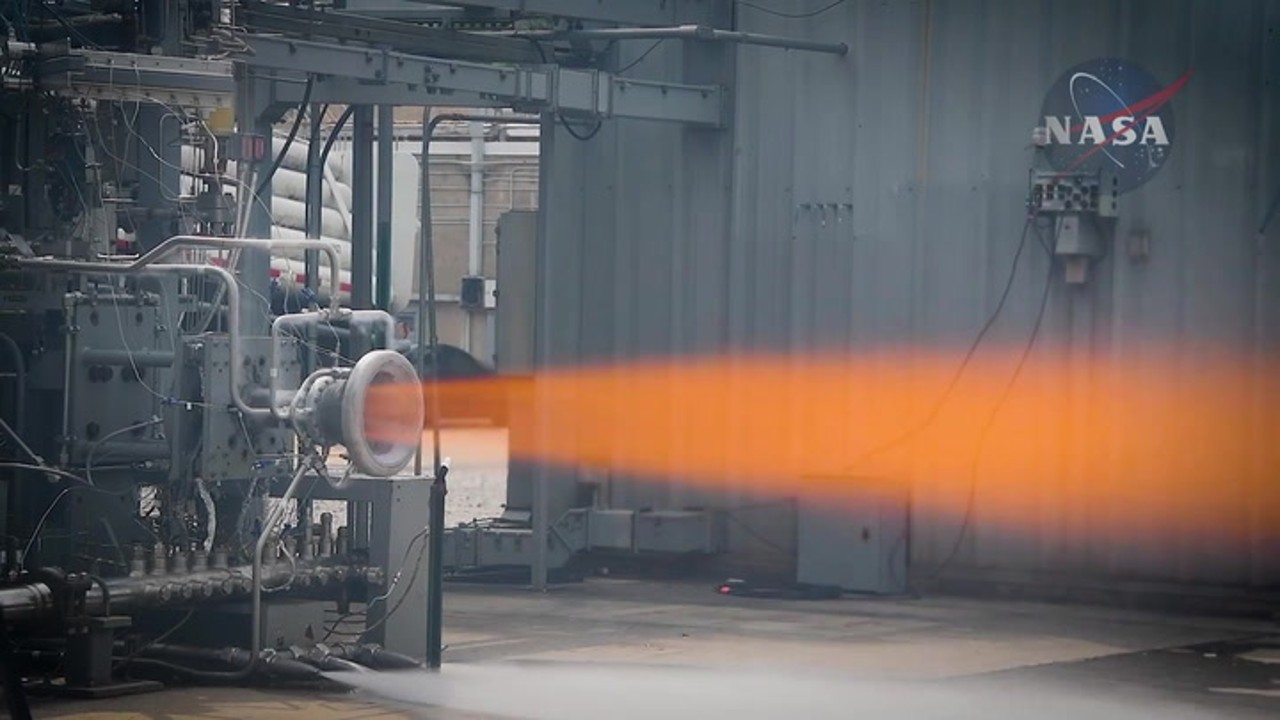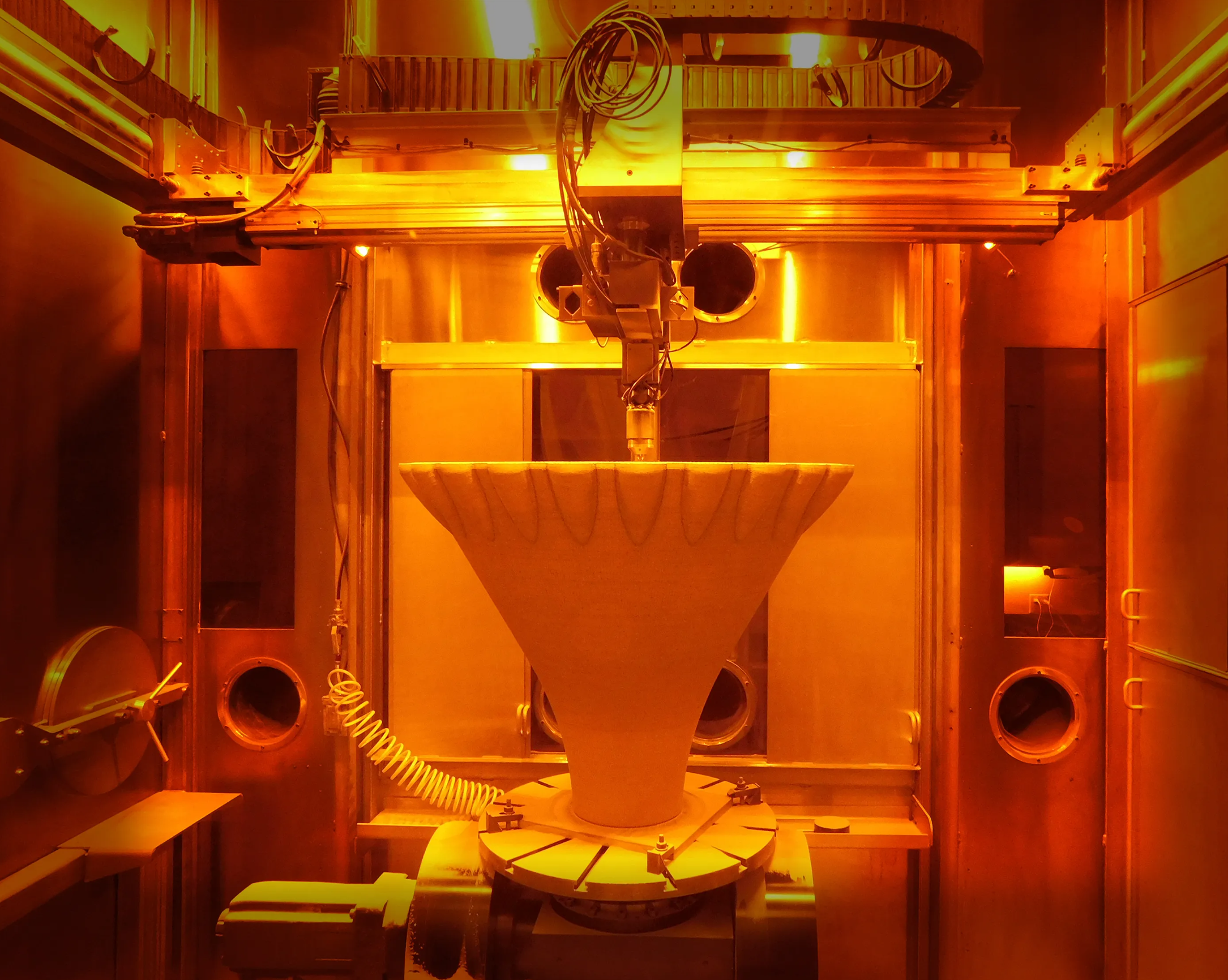Watch NASA test a 3D-printed rocket nozzle designed for deep space (video)
NASA's RAMFIRE project is investigating the use of additive manufacturing, or 3D printing, to design lightweight rocket hardware.
Engineers at NASA's Marshall Space Flight Center in Alabama conducted a test of a new 3D-printed rocket nozzle designed for deep space.
The test was conducted as part of NASA's Reactive Additive Manufacturing for the Fourth Industrial Revolution, or RAMFIRE, project. RAMFIRE seeks to investigate the use of 3D printing and aluminum in order to reduce manufacturing times and weight.
Reducing mass, and therefore takeoff weight, is a crucial goal for laboratories and space agencies developing hardware for future exploration in deep space far beyond low Earth orbit, said John Vickers, principal technologist for the agency's Space Technology Mission Directorate advanced manufacturing, in a statement. "Projects like this mature additive manufacturing along with advanced materials, and will help evolve new propulsion systems, in-space manufacturing, and infrastructure needed for NASA's ambitious missions to the moon, Mars and beyond."
Related: New Relativity Space factory will host dozens of 3D printers for Terran rockets
In the past, aluminum has been avoided in spaceflight manufacturing due to its susceptibility to heat and cracking during welding. Additive manufacturing, or 3D printing, gets around these issues by eliminating the need for welding and including small channels inside the metal that allow it to cool, preventing it from melting.
To test these new manufacturing techniques and materials, NASA teamed with two commercial partners, Elementum 3D of Erie, Colorado, and RPM Innovations (RPMI) of Rapid City, South Dakota.
"Industry partnerships with specialty manufacturing vendors aid in advancing the supply base and help make additive manufacturing more accessible for NASA missions and the broader commercial and aerospace industry," Paul Gradl, RAMFIRE principal investigator at NASA Marshall, said in the agency's statement. "We've reduced the steps involved in the manufacturing process, allowing us to make large-scale engine components as a single build in a matter of days."
Breaking space news, the latest updates on rocket launches, skywatching events and more!
Gradl added that the hot-fire tests of the RAMFIRE nozzle proved it can withstand the heat and stresses that a "lunar lander scale engine" would experience.
NASA and its commercial partners are now looking into these same manufacturing processes and materials for other applications, including for use in satellite technologies.

Brett is curious about emerging aerospace technologies, alternative launch concepts, military space developments and uncrewed aircraft systems. Brett's work has appeared on Scientific American, The War Zone, Popular Science, the History Channel, Science Discovery and more. Brett has English degrees from Clemson University and the University of North Carolina at Charlotte. In his free time, Brett enjoys skywatching throughout the dark skies of the Appalachian mountains.


